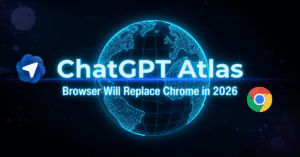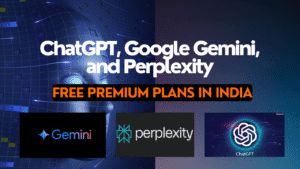Google has brought Opal. If you say it in short form, you can call it Apal or anything you wish. What is it going to do for you? It will give you many facilities.

Earlier, if someone wanted to get an app made, they would go to someone who made apps, and that person would charge thousands, even lakhs of rupees. Now Google has made it easy. Any mini applications—small ones, where there aren’t many technical things, not much need for coding—any person can make them with ease.
What is Google Opal?
How will it happen?
Look what Google has written: In India, Google has launched its new no-code mini app-making platform, named Google Opal. Through it, anyone can easily create an app without writing any code, and that too for free. There are no charges at all. It will promote Digital India and Startup Missions.
You may wonder why this is needed. As many of you are reading this article, I don’t think anyone has a startup, restaurant, cafe, salon, or gym, but those who do will understand how easy it will be for them.
The Problem Before Google Opal
Previously, if you wanted a basic application made, you would go to a developer, and they would ask for ₹50,000, ₹60,000, ₹70,000, or even ₹1 lakh—and it’s not like they’d give it to you immediately. It takes months and weeks because we thought developers meant coding.
Learning to code isn’t everyone’s cup of tea, and these people charge good money because non-technical users can’t build such applications.
With the arrival of AI and genetic technology, “no-code” and “low-code” platforms are trending. This was already happening elsewhere, where you could build apps without technical or coding knowledge, but Google has made it even easier with Opal.
How Google Opal Works
As you might have used Gemini, you give a prompt like “My photo is this, keep it real 4K HD, background black, clothes white, hair open and flowing, add rain, sunlight, book, umbrella—whatever you want,” and it generates what you said.
Google has made creating applications just as easy. You go to Opal, add a prompt, like “I have a restaurant, make an application for it,” choose the colours as you like, and voilà—the application for your restaurant is done.
Whether a gym owner wants to track diets, someone wants an application for any small business, or a salon owner—these kinds of small things that don’t need very technical aspects, like banking or share market apps—those need a lot of depth, code, and very high-tech setups.
I not talking about them here, but for small-scale apps and startups, people will use this powerfully, and it will be very beneficial. It’s called a no-code mini app maker—no coding needed, small applications will be made here.
You need to say what you want, in Hindi or English. The necessary code will be generated, the app UI will be designed, and database links will be established. It’s almost like a dream. A small restaurant owner might have dreamed, “If only I had an application with this colour menu, with these colour dishes,” or a gym owner, maybe wanted an app where admissions can be tracked and all info updated—these kinds of things are now possible through Opal, and that too for free.
Building Your App in Minutes
You sit at home, make it in minutes. What does the user do? Gives a prompt—a paragraph of what is needed. The AI analyzes the requirement and then makes the app within minutes. User customisation is essential — like setting colours with drag-and-drop, changing logos and themes — but you can change whatever you want. What used to take weeks now takes minutes.
Why This is a Game Changer for India
Why is this going to be a game-changer for India? India has around 630 million MSMEs—micro, small, and medium enterprises—most of which are not on digital platforms.
Now, someone in a rural area making handmade products can create their own app and reach people. It can be put on the Play Store, and anyone, anywhere in the world, can download, see the products, and learn about them. What used to cost from ₹80,000 to lakhs is now free.
What’s Possible with Google Opal
Areas like restaurants, cafes, fitness trainers, event organisers, wedding planners, school or college fests, local shops, and MSMEs—all can use it. Whether you need to take orders, track workouts, log diets, guest management checklists, event notifications, local offers, or customer loyalty apps—all these things can be found in one place, and for free.
Limitations of Google Opal
There are limitations: these are mini apps, so very technical things—coding and such—it won’t work for those, like banking, trading, or big e-commerce platforms like Flipkart or Amazon, for which thousands work in the backend—this is not for them. We are talking about a small scale.
Will Coders Lose Their Jobs?
Are coders losing their jobs? Absolutely not. It’s just making small people’s dreams come true. Those who would have never gone to get an application made, never intending to spend on developers, now have this option. Developers weren’t getting jobs from these people anyway, so nothing is lost. Now developers are freed from small, repetitive work—they can focus on big, complex, high-security products, which is good for them.
Connection to India’s Digital Mission
How does it relate to India’s Digital Mission? It’s connected to the Digital India Mission because it will connect citizens technically, promote Startups India initiatives, and realise the AI for Everyone vision.
If we conclude this whole article, Google Opal can become a symbol of technological democratisation in India because it gives everyone equal access. Anyone, whether they know coding or not, can turn their idea into a digital product. India’s digital economy will be promoted, and an innovation culture will grow.
Think of how many people in India and around the world have creative ideas about their business—”If only I had an application, with this feature, with that feature”—now they can try, even if not successful. At least people will give it a shot, have their own application, and sell their own products.
Those making handmade products or small influencers on Instagram or facebook will have their own platform—these things will advance our economy.
Quiz Question
Now, a question: what is the main aim of Google Opal? If you read this article thoroughly, you will know this answer.
First—making coding difficult.
Second—making mini apps without coding knowledge
Third—making a tool for game developers
Fourth—cloud security platform for developers
Give me the best correct answer in the comment box.
I hope you understood this article. Like the website, so you get all such articles on time. Study well. Have a good day, thank you.


